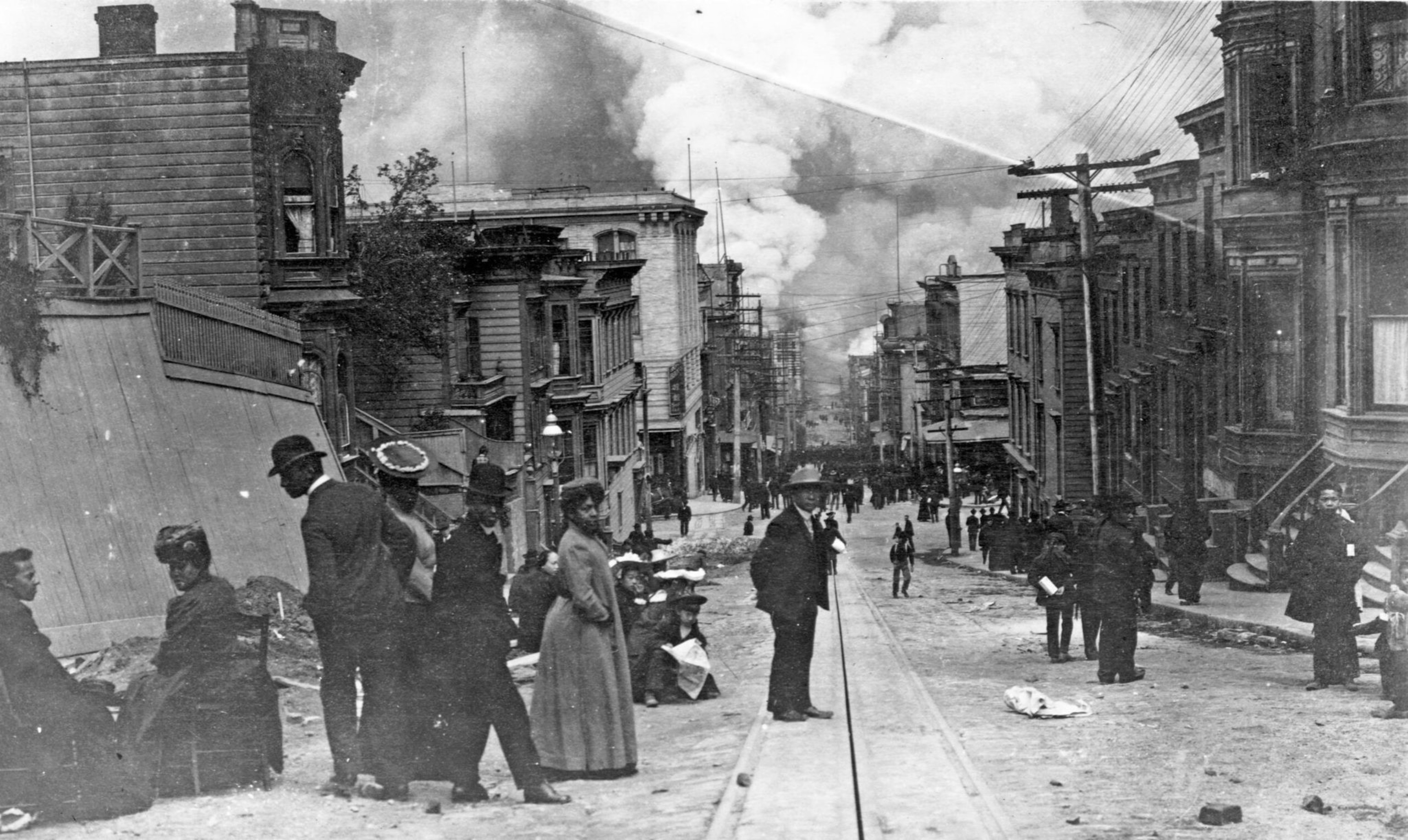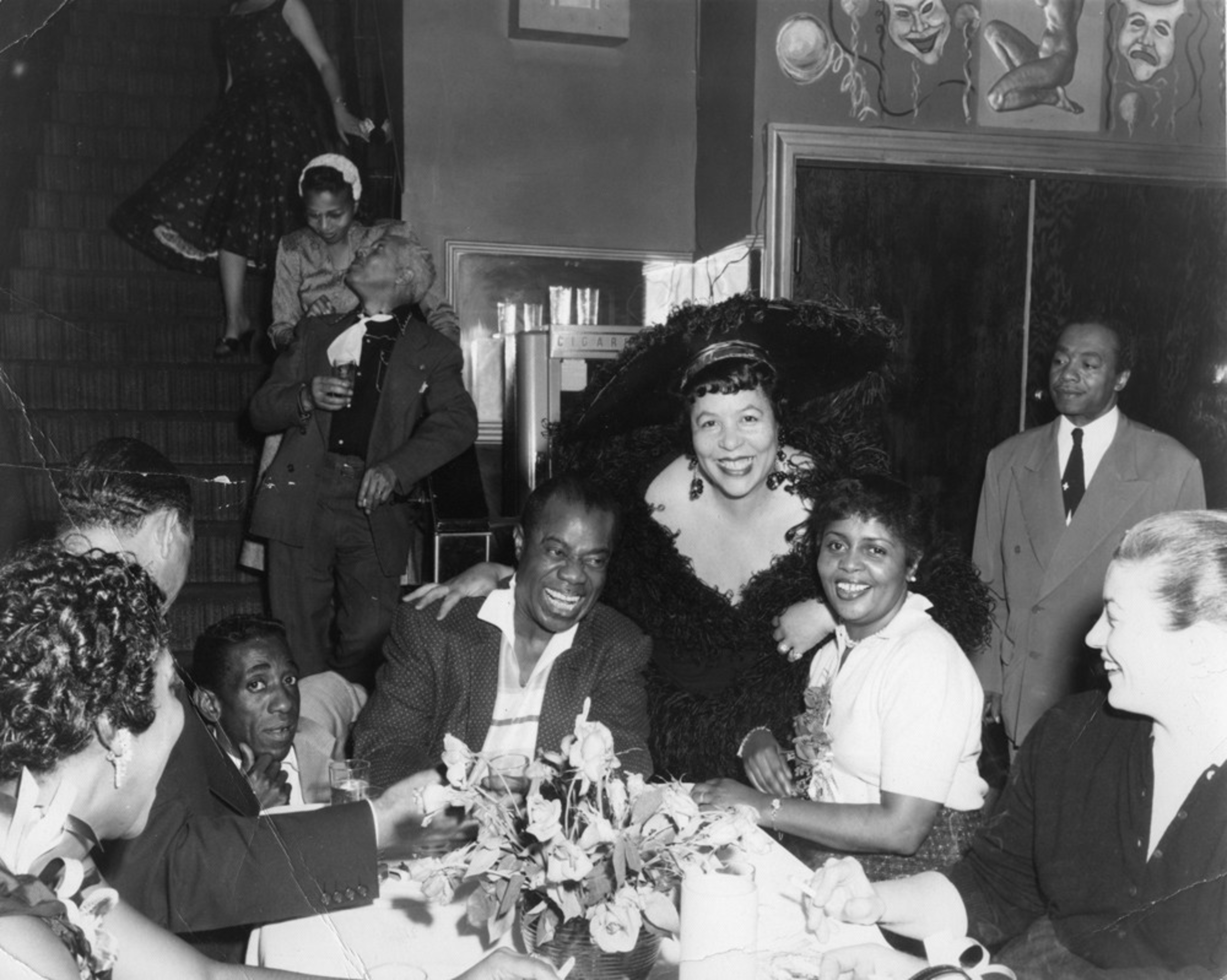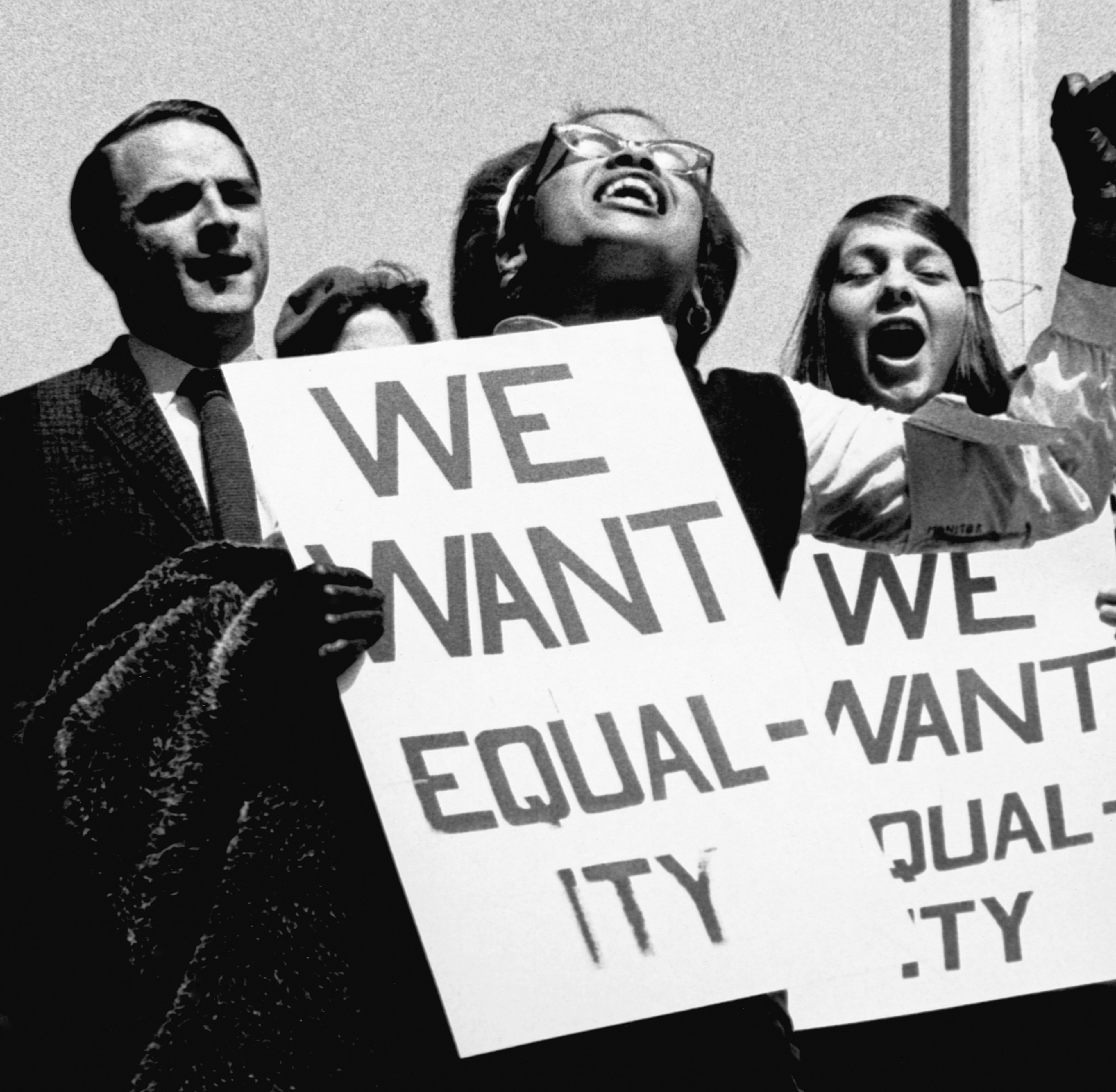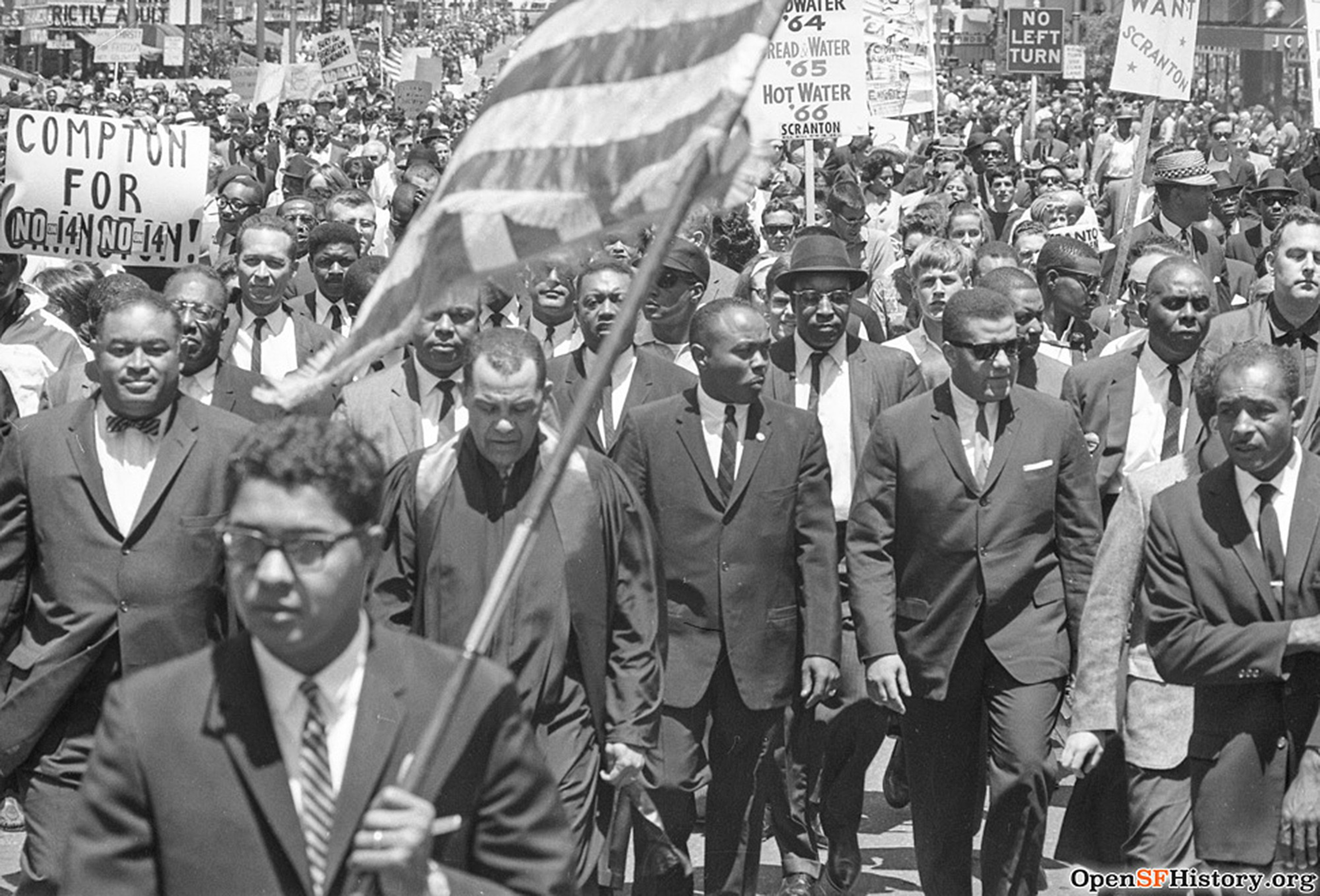It’s nearly impossible to discuss the case for reparations in San Francisco without first addressing the $5-million elephant in the room.
Next month, the Board of Supervisors will review a detailed 60-page report (opens in new tab) that traces the harm done to the city’s Black community over generations, drawing a direct line from segregation and displacement to disparities we see today in mass incarceration, education and homelessness. The first action item in the reparations plan calls for a lump-sum payout of $5 million to each qualifying Black resident.
How many people this would apply to is difficult to say because the number of Black adults who fit the criteria is unknown. But the number of people who qualify could very easily be in the thousands, if not tens of thousands: The conservative Hoover Institute (opens in new tab) projects the tab for this singular demand alone to cost as much as $175 billion, which is almost 13 times the city’s total budget and larger than the annual spending of all but three states in the country.
That’s a huge sum. It’s the kind of number that rouses Fox News talking heads (opens in new tab) from their crypts and gives sustenance to Twitter trolls. And it’s never going to happen. In an interview, Board of Supervisors President Aaron Peskin bluntly assessed the payouts as “financially unachievable in today’s world.”
It does us no good to consider that reparations payouts would only require trading in one Elon Musk.
In reality, the first action item in the long-anticipated report by the city’s African American Reparations Advisory Committee is simply an anchor in negotiations. That anchor is holding on to something more feasible and fruitful in the form of culturally relevant services backed up with significant investments. The successful passage of a reparations plan in San Francisco could potentially serve as a blueprint and tipping point for the rest of the nation.

“Most of the folks I’ve talked to have only focused on the $5 million recommendation,” said Supervisor Shamann Walton, who authored a resolution in early 2020 launching the reparations project and whose district in the Bayview has the city’s largest concentration of Black residents. “I’m trying to get everyone to focus on the fact that the task force is taking this work seriously and came together with recommendations that we need to look at.”
The committee’s report lists 11 objectives, each of which detail action items ranging from the lump-sum payouts to ambitious but actionable proposals.
They include: creating or recruiting a Black-owned community bank; giving Black residents certificates of preference on the same public housing that was denied to them for decades; making focused investments to improve education and health outcomes for Black children and mothers; recruiting strategies to hire more Black teachers; and offering therapy to students to address the trauma that comes with growing up in underserved neighborhoods.
And, of course, there is the apology.
“The first thing that the city, state and the nation needs to do is apologize,” said Rev. Amos Brown, who served as the reparations group’s subcommittee leader on health. “And we haven’t done that yet. Beyond just apologizing, we need to atone for the toll and do some actual action that shows you want to make amends.”

The supervisors hearing is the first act in a five-month process, and a final plan for reparations isn’t expected to be hashed out until June. Nothing is certain to come out of the report.
But if the political theater doesn’t drown out the history and facts underpinning the recommendations, San Francisco might be on the precipice of something big, something that gives other cities, states and perhaps even the federal government (opens in new tab) a road map to right the wrongs of the past.
‘Harlem of the West’
Before it was unceremoniously rebranded Lower Pacific Heights, San Francisco’s Fillmore District was one of the most vibrant black communities in the country, famous enough for its jazz and social clubs to earn the nickname “The Harlem of the West.”
This was in no small part thanks to the 1906 earthquake.
Nearly all of the city burned down following the quake, and many people who lived in the downtown core—mostly white people—temporarily relocated to an unscorched section of town west of Van Ness Avenue known as the Western Addition. Mainly an upper-middle class residential community at the time, infrastructure, communal housing, restaurants, shops and bars all rose to create a bustling new commercial hub. The sleepy space between Downtown and the Left Coast suddenly came to life.
But in the years and decades that followed, the downtown core was repaired and resurrected, and many residents returned to the Market Street corridor, leaving a diverse community of Jews, Japanese, Russians, African Americans and others. The first Black neighborhood in the Fillmore took hold on a four-block stretch of Fillmore Street between Geary and Pine streets, according to Found SF (opens in new tab).

Following the Great Depression came a wave of mass migration as African Americans fled the Jim Crow South in droves. A census count in 1940 listed San Francisco’s Black population at 4,846, which at that time represented just 0.8% of the city’s total population, according to the reparations committee’s report.
World War II created a vacuum for skilled workers, as mostly white men went off to war, opening the door to Black men and women looking for opportunity and a fresh start. By 1950, the city’s African American population had skyrocketed to 74,000-plus.
“We came here in the ’40s and built the ships, helped load the ships as longshoremen, and even as personnel on the railroad, to accommodate white soldiers to go to Europe to fight,” Rev. Brown said. “It was a Black community that built the economic engine of this city during that war period.”

The Fillmore, Bayview and Hunters Point neighborhoods all became bustling boroughs of businesses and culture for Black residents. But this wasn’t by accident.
Black people, by and large, were still denied some of the most basic civil rights. California never authorized chattel slavery, but it most certainly didn’t infringe on out-of-state slavers bringing in Black bodies to mine during the Gold Rush. Financial support through the G.I. Bill gave returning white soldiers a leg up financially while segregation persisted. Black soldiers were denied jobs, admissions to top schools and refused loans and leases in particular parts of town. Even a ballplayer as famous as the Giants’ Willie Mays was told where he could and could not live (opens in new tab).
An exhibit in the reparations committee’s report documents the neighborhoods that were “redlined (opens in new tab)” by the federal Home Owners Loan Corporation in the 1930s, setting the terms for areas in which housing loans were deemed especially risky. The Fillmore, Bayview and Hunters Point neighborhoods all became Black neighborhoods by design.
Paul Henderson, a political and legal commentator for MSNBC who grew up in the Bayview and is a fourth-generation San Franciscan, saw firsthand how the city welcomed the Black diaspora yet kept it at arm’s length.
His ancestors were sharecroppers in Texas and Mississippi before arriving in the city, and his grandmother would become a riveter at the toxic Navy shipyards before serving as an investigator for the federal government’s Civil Rights Commission. The family, including Henderson’s mother, was raised in the Harbor Row public housing projects before Henderson’s mother eventually bought a home on Gilman Avenue.
That house was just a few blocks from the projects—a level up but still close enough to see the impacts of systematic oppression.

“I always felt while growing up that things happened to my community, rather than for my community,” Henderson said. “It was a constant reminder every day that my experience in San Francisco is different from other people’s experience in San Francisco. I actually couldn’t wait to leave San Francisco.”
Henderson, who went on to become a prosecutor for the city before serving as a top staffer under the late Mayor Ed Lee, wasn’t the first Black San Franciscan to have this thought. And for those who didn’t want to leave the city, the government in many ways did the work for them.
In 1945, the state passed the Community Redevelopment Act, allowing for the destruction and redevelopment of “blighted” areas under the guise of urban renewal (opens in new tab). Over the ensuing decades, demolition in the Fillmore closed 883 businesses, displaced 4,729 households and destroyed 2,500 Victorian homes, harming almost 20,000 people in total, according to the committee’s report.
San Francisco’s Black population peaked in 1970 with a high of more than 88,300 people. By 2021, that number had plummeted to around 43,200 people. But the numbers within these numbers tell an even more devastating story.
‘See and Learn From Us’
Black people have the lowest life expectancy of any racial group in San Francisco. Pregnant mothers die at the highest rates (opens in new tab), and babies are born at a lower average weight. Children quickly fall behind in school, with 82% of Black students in San Francisco’s public schools lacking proficiency in English compared with 46% across the district.
Police in the city are five times more likely to stop a Black person for a traffic violation than a white person. African Americans make up 43% of San Francisco’s current jail population, and a 2019 survey found that 37% of people on the streets identified as Black of African American. However, Black people make up just 5.3% of the city’s total population.
This is how a number like $5 million finds its way into a larger conversation about compensating a particularly harmed group of people. Direct payments will likely never happen—especially in the face of a looming budget deficit that could reach as much as $728 million—but broader systemic changes could be made across the spectrum.
“Many reforms can be institutionalized and all of them require multiyear, multigenerational commitments,” said Peskin, president of the city’s Board of Supervisors. “So, I think just having the conversation and committing ourselves to a more fair and just society that reckons with its past and incorporates that into its future is a conversation worth having.”

Action in the form of reparations has been passed, albeit in modest form, in Evanston, Illinois (opens in new tab). In 2021, Supervisor Walton and Mayor London Breed co-sponsored a $120 million Dream Keeper initiative to infuse resources into many of San Francisco’s Black community organizations.
But an actual policy plan labeled “REPARATIONS” coming out of San Francisco is the kind of domino that could potentially nudge other governments to consider: Why not here?
“I would say [the $5 million lump-sum payout] was less around a bargaining chip and more of a quest to … have people feel comfortable dreaming and hoping and putting their biggest aspirations out there,” said Sheryl Davis, the director of the city’s Human Rights Commission, which has helped facilitate the committee’s work. “I know that Berkeley, Sacramento, other places are looking at stuff, and they’re looking to kind of see and learn from us.”
The final plan for reparations in San Francisco should arrive early this summer, coming just ahead of a July 1 deadline for a state task force to release its own report (opens in new tab) based around a bill Secretary of State Shirley Weber authored when she was still serving in the state Assembly. There’s little doubt state officials will be watching San Francisco and taking cues.
“There’s never been an intentional, direct and specific action taken to address the harm. That’s why this is so important,” Henderson said. “These measured steps now will impact generations to come, and they would certainly impact the rest of the state and the nation to take it responsibly. That’s what is at stake—the reputation of the city and the value of communities of color.”
Watch: SF’s Bold Reparations Proposal Explained
Editor’s Note: This article has been updated to reflect that the Board of Supervisors hearing discussing the reparations proposal has been rescheduled for next month. It is now scheduled for March 14 at 3 p.m.
